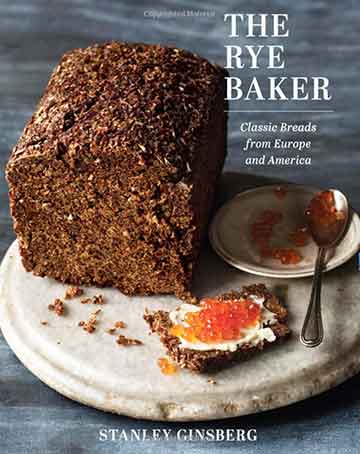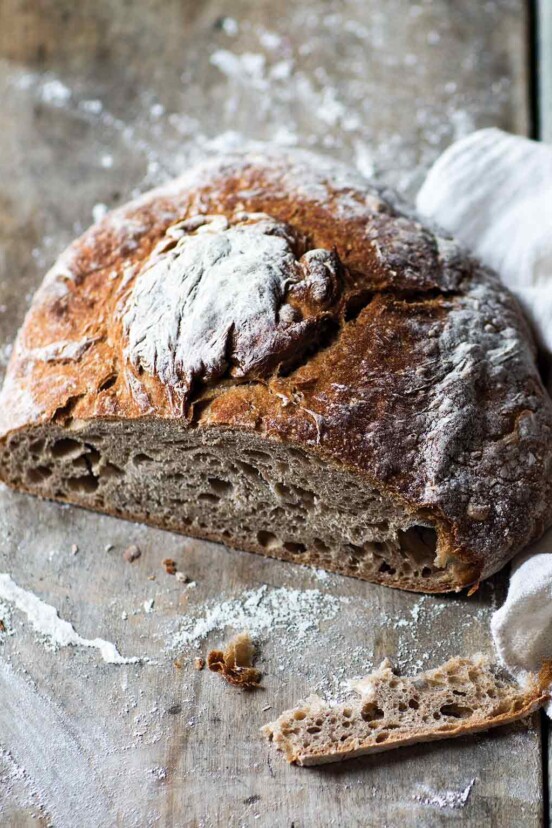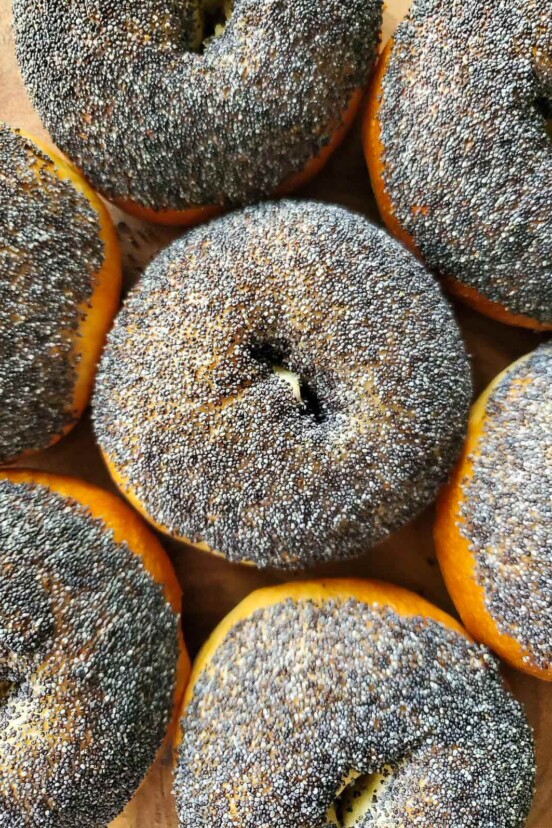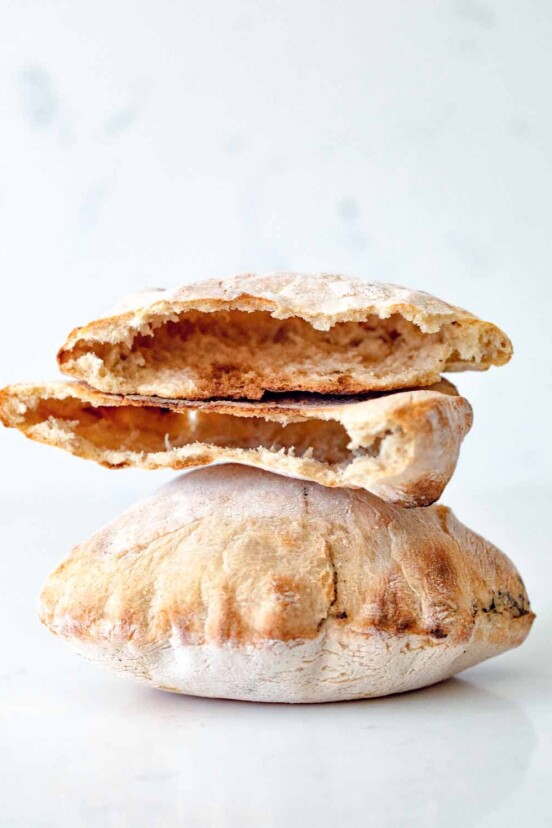
TL;DR (Quick-Answer Box)
- What it is: A traditional rye sourdough starter made from scratch with just two simple ingredients: whole-grain rye flour and water, plus time.
- Why you’ll love it: A vibrant and active sourdough starter that’s a snap to make and a fantastic way to enjoy healthier, homemade bread.
- How to make it: Mix flour and water, then feed it daily for a week. After a few days, it will bubble and develop a sour smell. Use it in your favorite sourdough bread recipe.

Jump To
It’s not hard to make a rye sourdough starter from scratch. Some sourdough starters rely on wild yeasts that live in the air, others on acid-producing bacteria present in buttermilk, yogurt, pineapple juice, and the like, and still others start with commercial yeast or store-bought starters.
☞ Learn More: How to Dry Sourdough Starter
Fact is, none of these additives is necessary. All it really takes to build a delicious and robust rye sour culture, or starter, is some whole-grain rye flour, water, a warm place, and patience.
And when your traditional rye sourdough starter is complete, the very first thing you’re going to want to do is use it to make this Galician rye bread.
More Great Sourdough Recipes
Want to Save This?
Write a Review
If you make this recipe, or any dish on LC, consider leaving a review, a star rating, and your best photo in the comments below. I love hearing from you.–David
Featured Review
Hi, guys. Finally have my rye sourdough starter working really well in and out of the fridge. Baking rye and white loaves every two weeks. My wife says the rye is just like she use to buy in Germany. Happy Days!
Joe

Rye Sourdough Starter
Equipment
Ingredients
Day 1: Make the Rye Sourdough Starter
- 2.5 ounces whole grain rye flour, preferably organic
- 2.5 ounces warm water (105°F or 41°C)
Days 2 to 7: Refresh the Rye Sourdough Starter
- 2.5 ounces whole grain rye flour, preferably organic
- 2.5 ounces warm water (105°F or 41°C)
- 2.5 ounces Sour Starter from the preceding day
Days 8 and Beyond: Maintain the Rye Sourdough Starter
- 2.5 ounces medium or whole-grain rye flour, preferably organic
- 2.5 ounces warm water (105°F or 41°C)
- .25 ounces rye sourdough starter
Instructions
Day 1: Make the rye sourdough starter
- Start with equal amounts of organic rye flour and water by weight. Dump them in a nonreactive (glass, porcelain, stainless-steel, plastic) container, mix by hand into a stiff paste, cover, and let stand at room temperature (68 to 72°F or 20 to 22°C) for 24 hours.
☞ TESTER TIP: Occasionally the yeast normally present in whole grains fail to establish itself in a new culture; if, after 3 or 4 days, the culture darkens, develops a mold, or smells bad, dump the whole batch and start over. After a week, the culture, or sourdough starter, will be ready to use or to be stored refrigerated in an airtight container for a couple days. [Editor's Note: If storing the sourdough starter for more than a couple days, you'll need to maintain it, which we explain how to do just below.]
Days 2 to 7: Refresh the rye sourdough starter
- The next day, discard all but 2 1/2 ounces (70 grams) of the culture and mix the remainder with the refresh ingredients, cover, and let stand. Repeat each day, discarding all but 2 1/2 ounces (70 grams) of the preceding day’s culture.
☞ TESTER TIP: The most important point to remember at the early stages is to feed the sourdough starter daily. Even when it shows no apparent fermentation, the yeast is busy multiplying and consuming nutrients at a very high rate. By the second or third day, it will swell, show bubbles, and give off a clean sour smell. Over the next few days the activity will become more and more vigorous and the smell more intense.
Days 8 and Beyond: Maintain the rye sourdough starter
- In a perfect world—or in a working bakery—sourdough starters are refreshed daily. That said, daily feedings demand both a degree of dedication and abundant flour supplies that are impractical for all but the most committed home bakers. You can get by refreshing your starter every 36 hours or so.
- Mix the rye flour, water, and rye sourdough starter by hand until incorporated. Cover and ferment at room temperature (68 to 72°F or 20 to 22°C) overnight or for 10 to 12 hours. The sponge will be very bubbly, have a clean sour smell, and will have tripled in volume. Store refrigerated in an airtight container and it will last indefinitely.

Explore More with AI
Nutrition
Nutrition information is automatically calculated, so should only be used as an approximation.
Recipe Testers’ Reviews
The rye starter was easy to make and quick. It took about 5 minutes each of the 7 days. Mine smelled great and seemed consistent after the week of feedings. I switched to the refresh amounts after that and it stayed nice and healthy.
During the buildup, you end up tossing about 2/3 of it away. I definitely recommend a scale versus just using volume measurements.














For Days 8 and beyond, you list .25 oz of starter… Is that correct? 1/4 of an ounce? Or is it supposed to say 2.5 oz? Thank you.
Hey, B!
Yup, the .25 ounces (1/4 ounce) is correct, and I can definitely see why it’s confusing after using 2.5 ounces for the first week.
The reason for the big change is that the goal of the process shifts:
⦿ Days 2-7 are about BUILDING the starter. You use a large amount of starter relative to the new flour and water (a 1:1:1 ratio) to get the yeast culture strong and established quickly.
⦿ Days 8 and Beyond are all about MAINTAINING a mature starter. By this point, your starter’s really active, so you only need a tiny amount (.25 oz) to “seed” the new, larger amount of flour and water (a 1:10:10 ratio).
This small seed amount is all that you need to refresh the batch over 10 to 12 hours. I hope this helps explain the change! Let me know if you have any more questions.
I have a lot of rye sourdough starter how much do I take out to make two loaves of rye bread?
Ken, thanks for reaching out! It’s great that you’re ready to bake with your rye sourdough starter. The amount of starter you’ll need depends on the specific rye bread recipe you plan to use. Do you have a recipe in mind?
A typical recipe for two loaves of rye bread would likely call for anywhere from 1 to 2 cups of active rye sourdough starter. That being said, this can vary a LOT depending upon the hydration of the starter and the other ingredients in the recipe.
Is it possible to double my starter so I can bake 2 loaves? Would I just add 140g flour, 140ml water and 14g starter when feeding it?
Yes, you can do that, Stephanie. Just make sure that you have a container large enough to contain it when it rises.